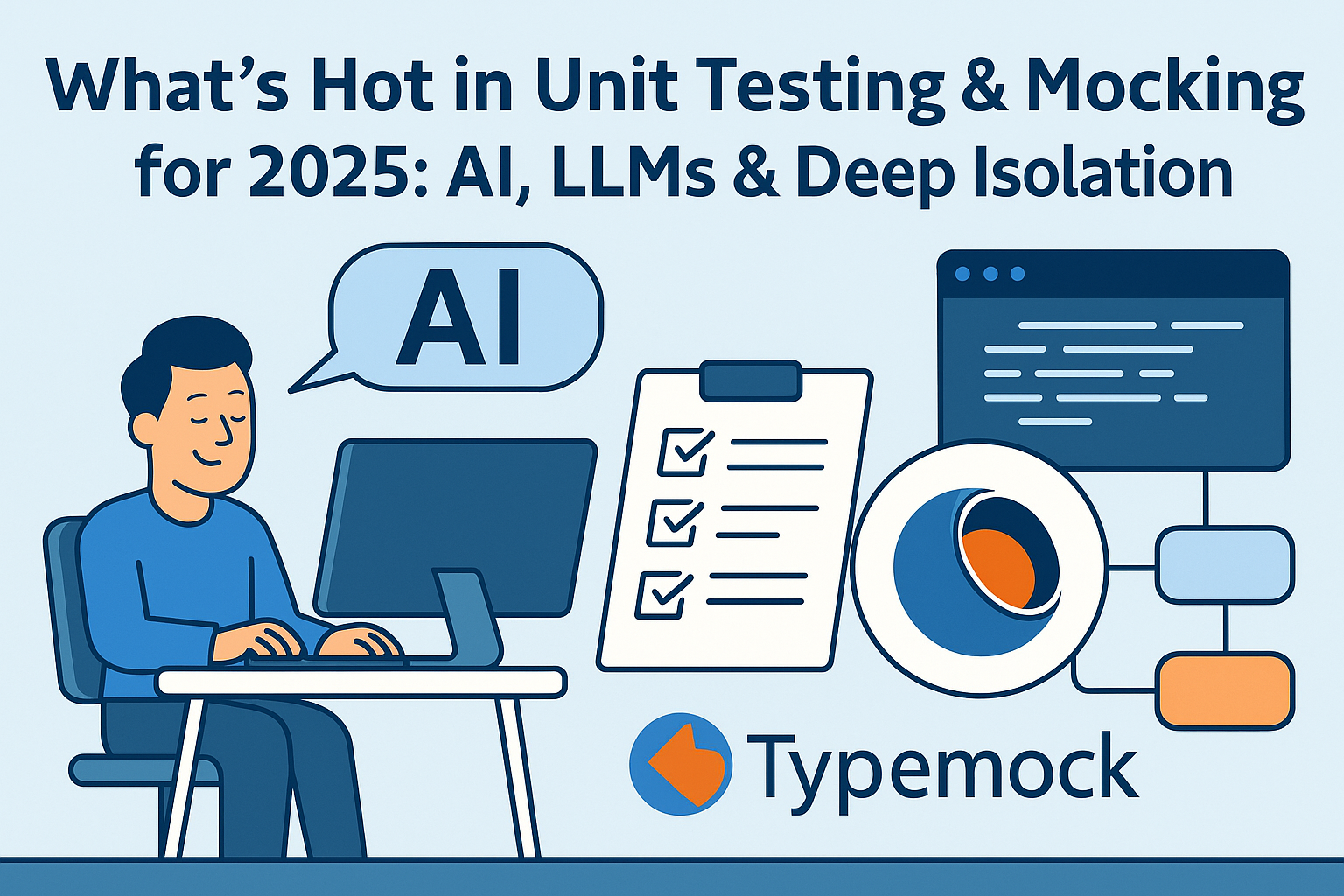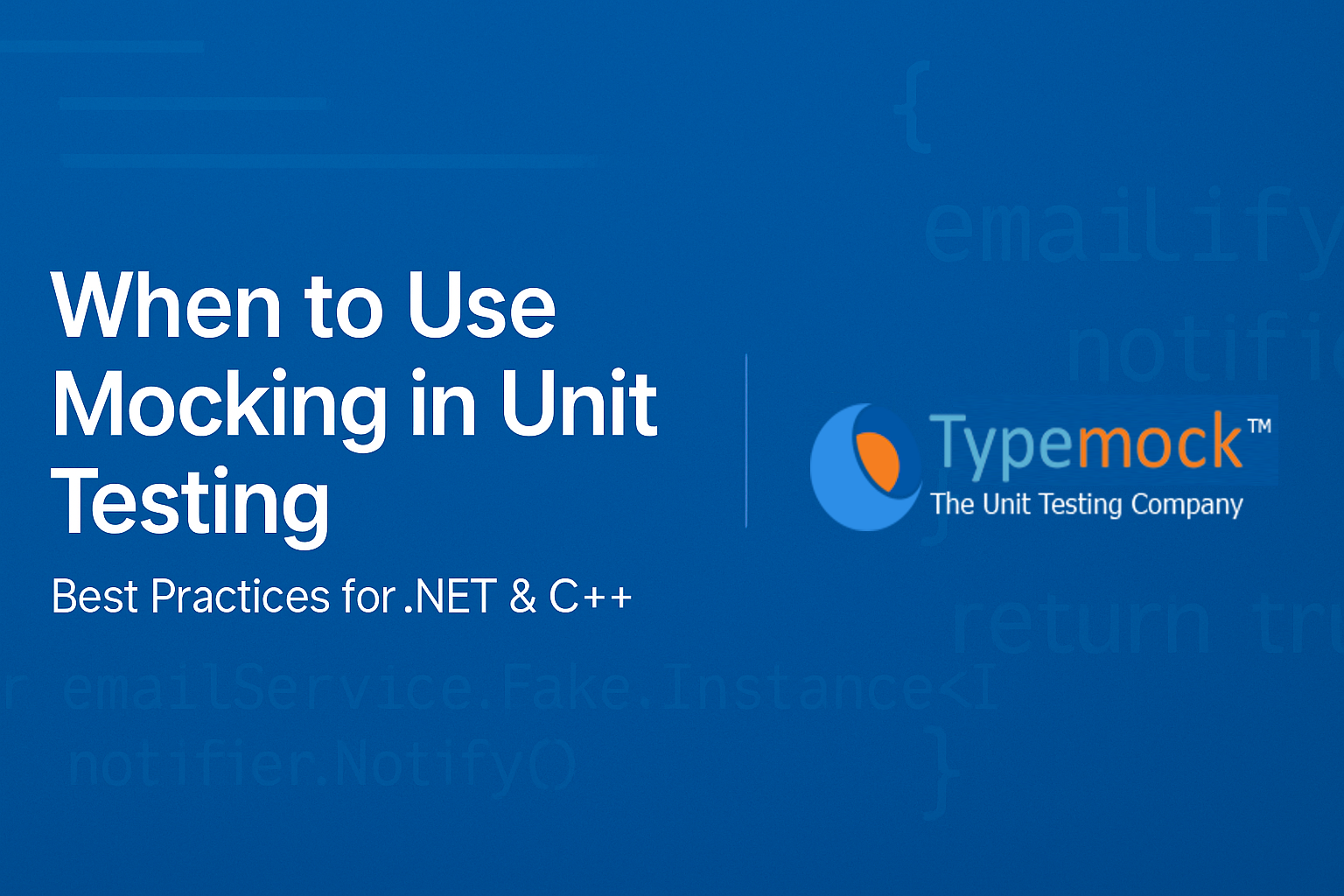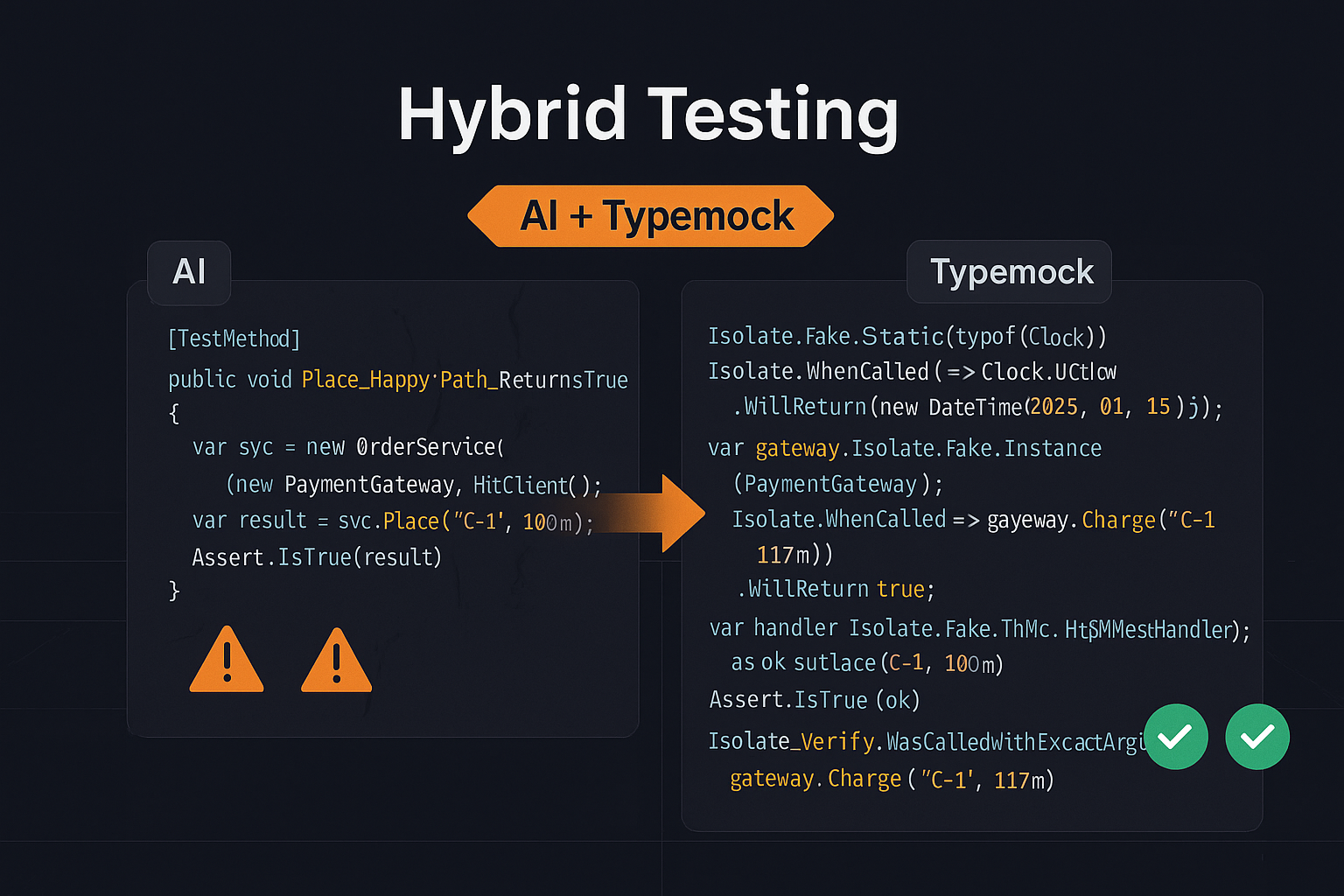Unit testing trends in 2025 are evolving fast, fueled by AI copilots, LLM-assisted test generation, and smarter mocking tools. But while some teams chase automation, others are doubling down on control: embracing deep isolation techniques, hybrid human–AI testing, and domain-specific test design.
In this post, we explore what’s hot (and what’s hype) in the world of mocking and unit testing in .NET and C++, with practical insights from the teams using Typemock’s AI-ready Isolator API to stay ahead.
If you’ve ever felt like unit testing is still too hard, you’re not alone. Let’s dive into the trends that are reshaping how dev teams test in 2025.
🚀 1. AI-Driven Test Generation & LLM Innovation
Tools like Keploy and Amazon Q capture code behavior and auto-generate tests from interactions. Academic research, such as EvoGPT and TestForge shows LLMs combined with evolutionary refinement can improve coverage and detect subtle bugs
But AI-generated tests often:
- Miss edge cases
- Mirror implementation rather than behavior
- Fail on minor refactors
🧱 2. Mocking & Stubbing Are Still Core
Mocking frameworks remain essential to isolate units from external systems . Effective mocking:
- Verifies interactions (e.g., calls made with specific args)
- Simulates varied dependencies and edge-case conditions
- Keeps tests fast and independent
🤖 3. Hybrid Testing: AI + Deep Isolation
The emerging best practice for 2025:
- Let AI generate test scaffolding.
- Refine logic edge cases.
- Use powerful mocking tools, like Typemock, to fake statics, sealed classes, and C++ dependencies.
💻 4. Example: AI–Generated vs Typemock-Enhanced Test
AI-generated pseudo-code:
|
1 |
[Test]<br>public void CalculateDiscount_ShouldReturnCorrect()<br>{<br> var service = new PriceService();<br> var result = service.CalculateDiscount(100);<br> Assert.AreEqual(90, result);<br>}<br> |
Enhanced with Typemock:
|
1 |
[Test]<br>public void CalculateDiscount_ShouldReturn10Percent_ForPremiumUser()<br>{<br> var userService = Isolate.Fake.Instance<IUserService>();<br> Isolate.WhenCalled(() => userService.IsPremium("u1")).WillReturn(true);<br><br> var service = new PriceService(userService);<br> var result = service.CalculateDiscount("u1", 200);<br><br> Assert.AreEqual(180, result); // isolates dependency, focuses on behavior<br>}<br> |
📦 5. Typemock Steps Up the Isolation Game
With Typemock:
- Mock static/free functions in C++ via Isolator++
- Mock static/private methods in DotNet via Isolator
- Fake sealed or legacy types without refactoring
- Generate AI-assisted scaffolding, then refine with deep isolation
✅ 6. What Developers Can Do Now
- Use AI to draft tests, then add behavior tests using Typemock
- Ensure test quality by isolating dependencies and mocking edge cases
- Integrate AI + Typemock into CI for maintainable, resilient test suites
🔗 Related Resources:
- Mocking & Stubbing in Effective Unit Tests
- EvoGPT: AI-Boosted Test Suites
- Automated Test Generation with Amazon Q
🎯 Why It Matters
As unit testing trends in 2025 shift toward automation, human-led isolation remains crucial. AI can help generate tests, but only Typemock gives developers the control to create stable, meaningful, and maintainable tests.




